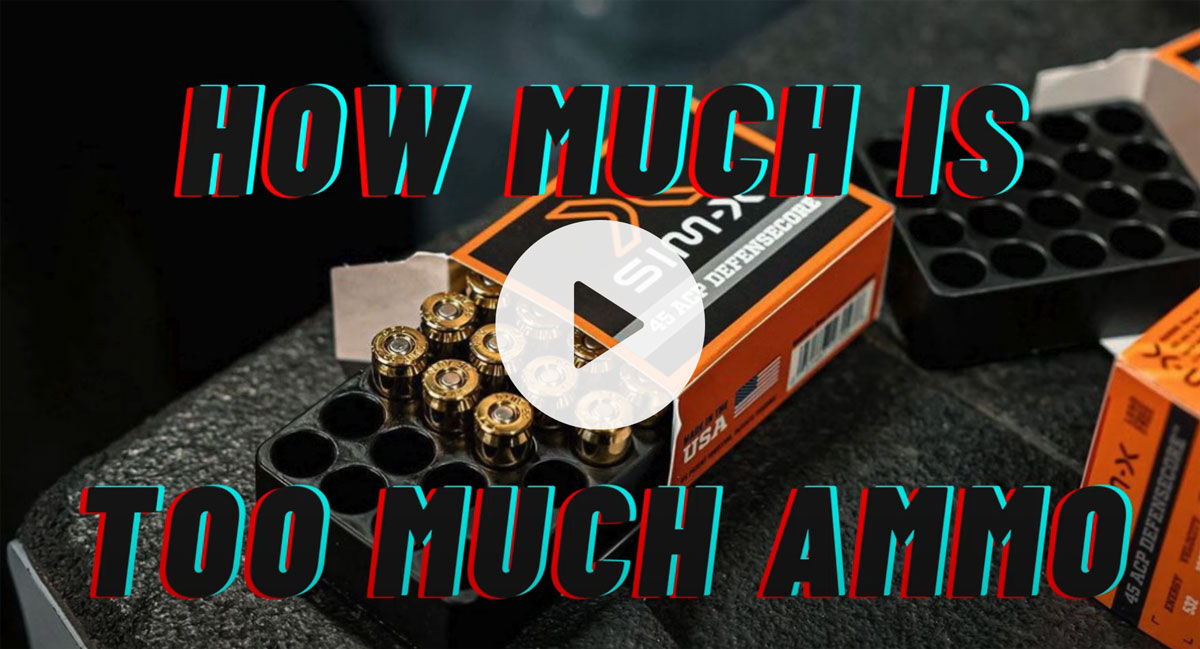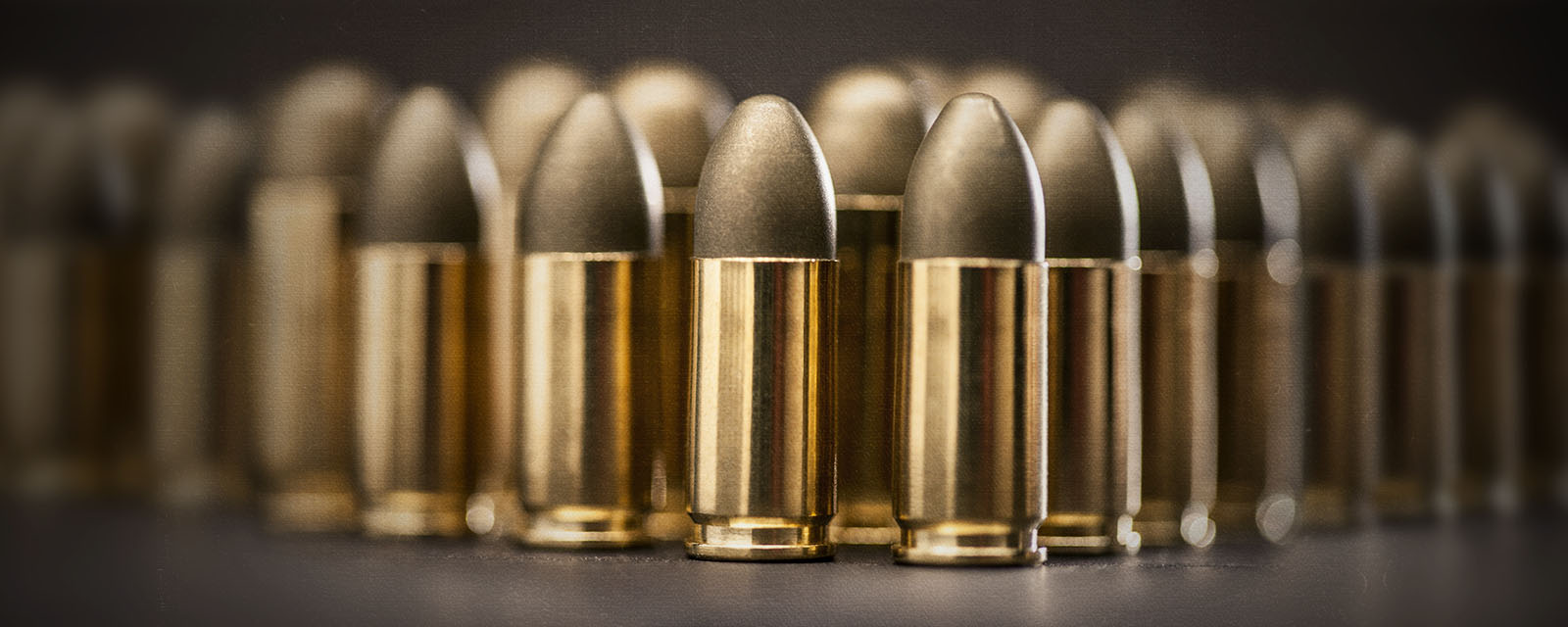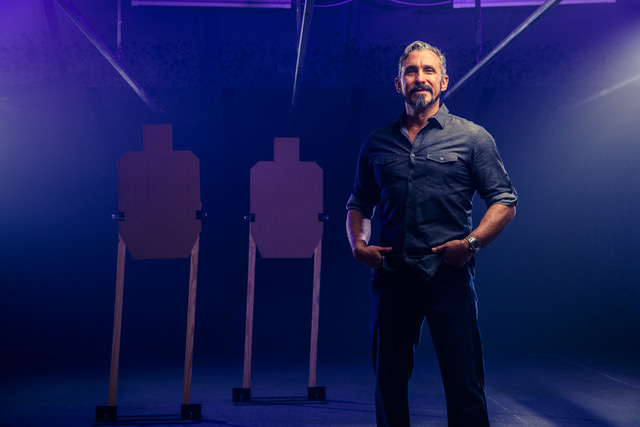A common question I get asked is how much ammunition I have on hand. To be brutally honest, I have no idea. It’s a lot, but there is a method to my madness. The real question is how much ammunition YOU should have on hand. If you’ve been around the firearm and ammunition world for a while, chances are you’ve lived through some interesting times. The highs and lows have had a direct impact on ammunition availability. Figuring out how much ammunition is a matter of understanding your needs, along with your resources, such as cost and space.
How Often Will I Use Ammunition?
When it comes to understanding your needs, the first thing to do is be honest with yourself. Do you intend on shooting frequently or is it seldom? There is nothing wrong with seldom, until you throw a pandemic, riots, less police and limited resources into the mix. Things get interesting and fast during those times. Even if you fall into the seldom category, you still need to keep those worst-case situations in mind. The hard part is trying to keep things in perspective, and I will share some strategies to help. Just remember emergencies are, by nature, unplanned and unpredictable. If they weren’t, they wouldn’t be emergencies.
How Much Ammunition Do I Need?

Frequency of Use
Now we are getting to the crux of the situation. I like to keep at least two years of practice ammunition, often referred to as full metal jacket on hand. While my quantity is higher, this model works for just about anyone at any skill level. Typically, the higher your skill level, the more ammunition you shoot, therefore, more you have in reserve. Now, back to those crazy times we seem to see every four years. How do you account for the times where ammunition is in short supply or you are limited in how much you can purchase? The answer is to be prepared. As we ramp up to those four-year cycles, two years of ammunition reserve allows me to navigate what might be uncharted waters. More is nice, but this is my minimum. It allows me to continue to practice and maintain my skills. And that’s an important consideration. You may be tempted to horde your reserve when times get tough. I can sympathize as the thought crosses my mind. Think of it from these terms—in those difficult, often crazy times, you may need your skills more than ever. While you have a nice ammunition reserve, it is doing you no good collecting dust. Instead, keep your skills honed to a minimum standard. No doubt, when times are tough and resources are scarce, you will need to adjust your ammunition expenditure, but a reserve makes that an easier process.
Finances and Storage
When it comes to resources there are two main categories: finances and storage. Purchasing ammunition costs money and while buying in bulk is a cost-saving strategy, it still consumes some of your resources. I find it much better to stock up when prices are low than feel the pinch during those desperate times. I’m not about to tell you where to spend your resources; food on the table, clothes on your back and a roof over your head are of course the priority. Which is why when the times are good it’s good to invest. Consider your reserve an investment in protecting, providing and preserving.
Types of Firearms
You can see how this can get away from you quickly when you account for the different types of firearms you own or other competent shooters in your household. The best advice is to make defensive firearms the priority. If you have a firearm for concealed carry and home defense, it would be nice if they are at the very least, the same caliber. If you have a handgun and a rifle, now you are looking at doubling your investment. While it is nice to have a collection of firearms, they require ammunition, and when your collection has various calibers, it can be overwhelming. This is why focusing on the defensive firearms first is the goal. With extra shooters in the house, you need to consider their development and sustainment needs as well. It’s nice when all you must consider is yourself, but that is not my world.
Defensive firearms are the priority. While they don’t require defensive ammunition exclusively, if faced with a defensive gun, using ammunition specifically designed to increase terminal performance, such as jacketed hollow points, creates another obstacle. Typically, defensive ammunition is more expensive and less popular than practice ammunition. You can use practice ammunition in a defensive situation, but it is less than ideal and should be reserved for rare occasions or poor planning. The question of how much defensive ammunition to store is a complex question to answer. Start by asking yourself how many magazines you will keep loaded with defensive ammunition. There is usually one carried in the firearm along with one, possibly two, for emergency reloads. Total the capacity to give you a starting point. If I have a smaller firearm for concealed carry, it might have a 10-round magazine capacity. That doesn’t stop me from using a 15-round or higher magazine for my emergency reloads. That gives me a total of 25 rounds of defensive ammunition. A new problem we face is defensive ammunition comes in different quantities—you have 20, 25 and 50-round boxes. While the 50-round box will be more expensive, it gives me two loadouts. A couple of boxes can last me a while since I don’t shoot defensive ammunition as much as practice ammunition. As a side note, I shoot my defensive ammunition once a year so couple of boxes can last me a couple of years. More on that later.
Storage Options
Storage is our last consideration. When someone asks me how much ammo is too much, my answer is usually the same—if I don’t have to carry it, then I don’t see a limit. But when it comes to storage that is a different story. If you are making an investment, you want to safeguard your investment from the elements. Storing in a cool and dry location is key. You also need to ensure it does not fall into the wrong hands and that means children. Locking your ammunition in a storage container separate from your firearms is a good start. If not feasibly possible because of space, then using metal ammunition cans is a good alternative. Throw some desiccant packets to help control moisture and a padlock to deny unauthorized access to give you peace of mind on multiple fronts.
What Amount Is Best For Me?
Is there such a thing as too much ammunition? Of course. A good start is to understand your needs, finances and space. If you’re a frequent or seldom shooter, then adjust the quantities accordingly. How much do you have to invest and do you plan to replenish your reserve as it is diminished through practice? Safeguard your investment and ensure your ammunition and firearms do not fall into the wrong hands. Always take the appropriate steps to deny unauthorized access. There are more questions still unanswered, but this gives you a solid base to begin your journey.


